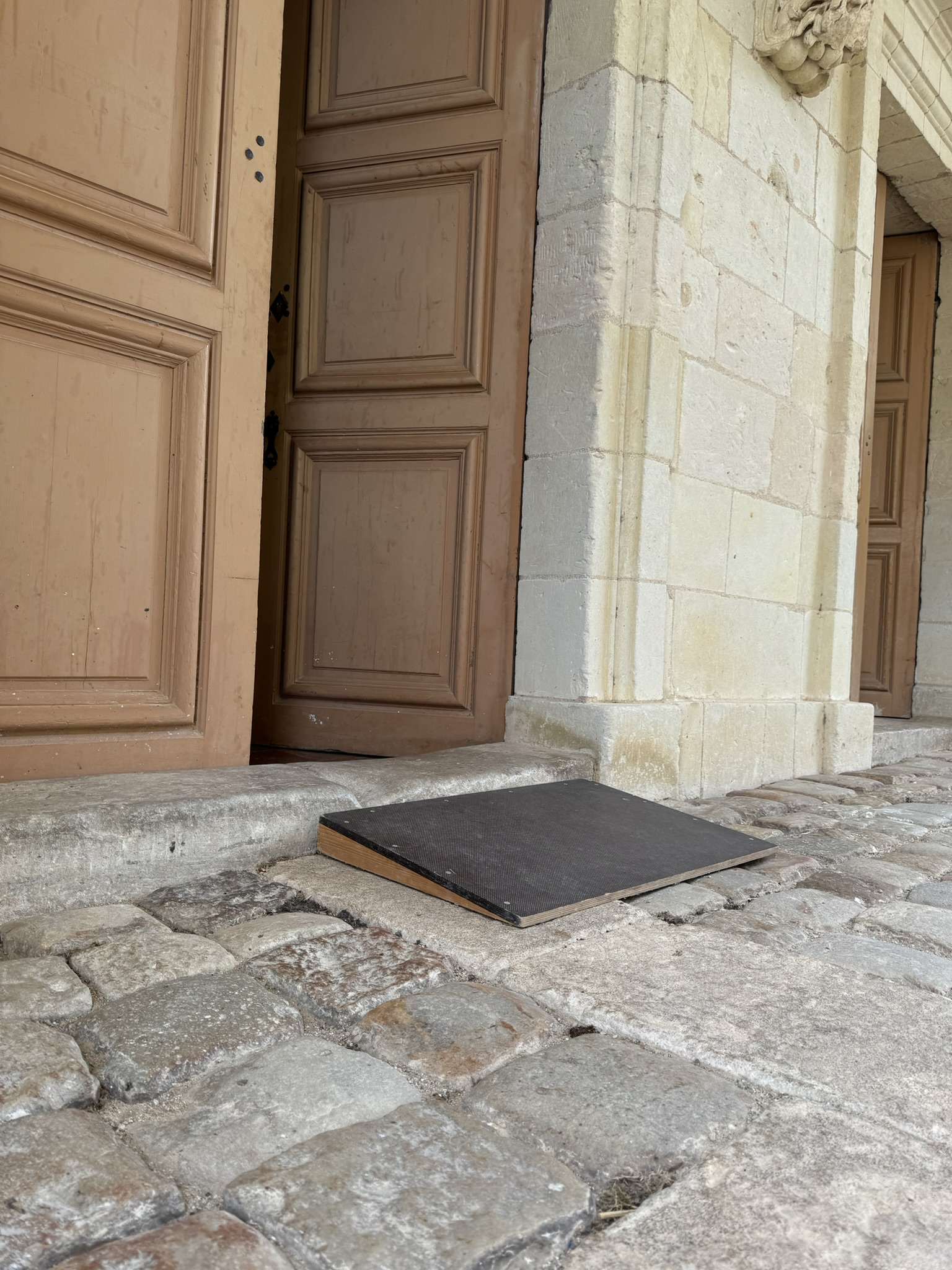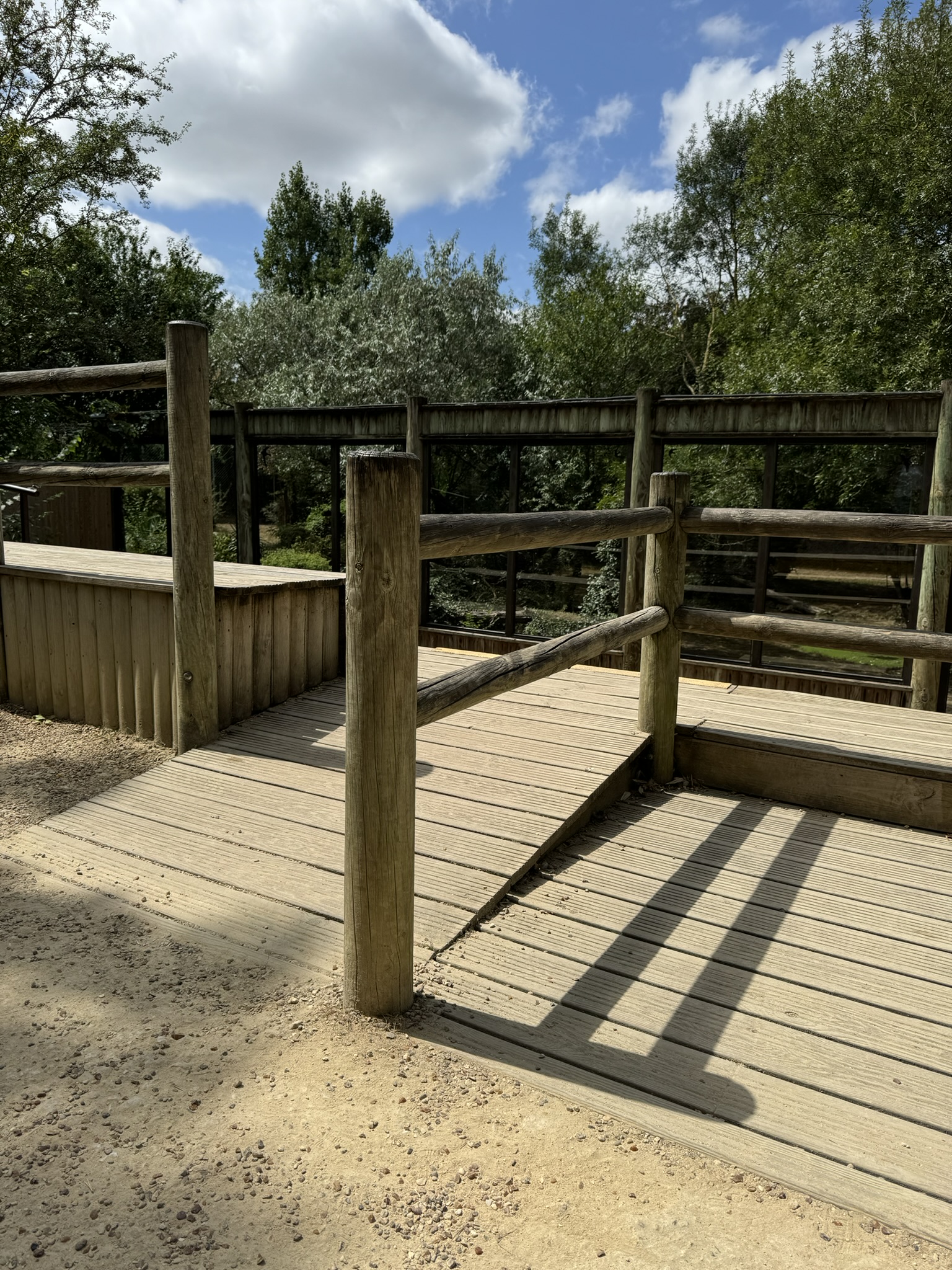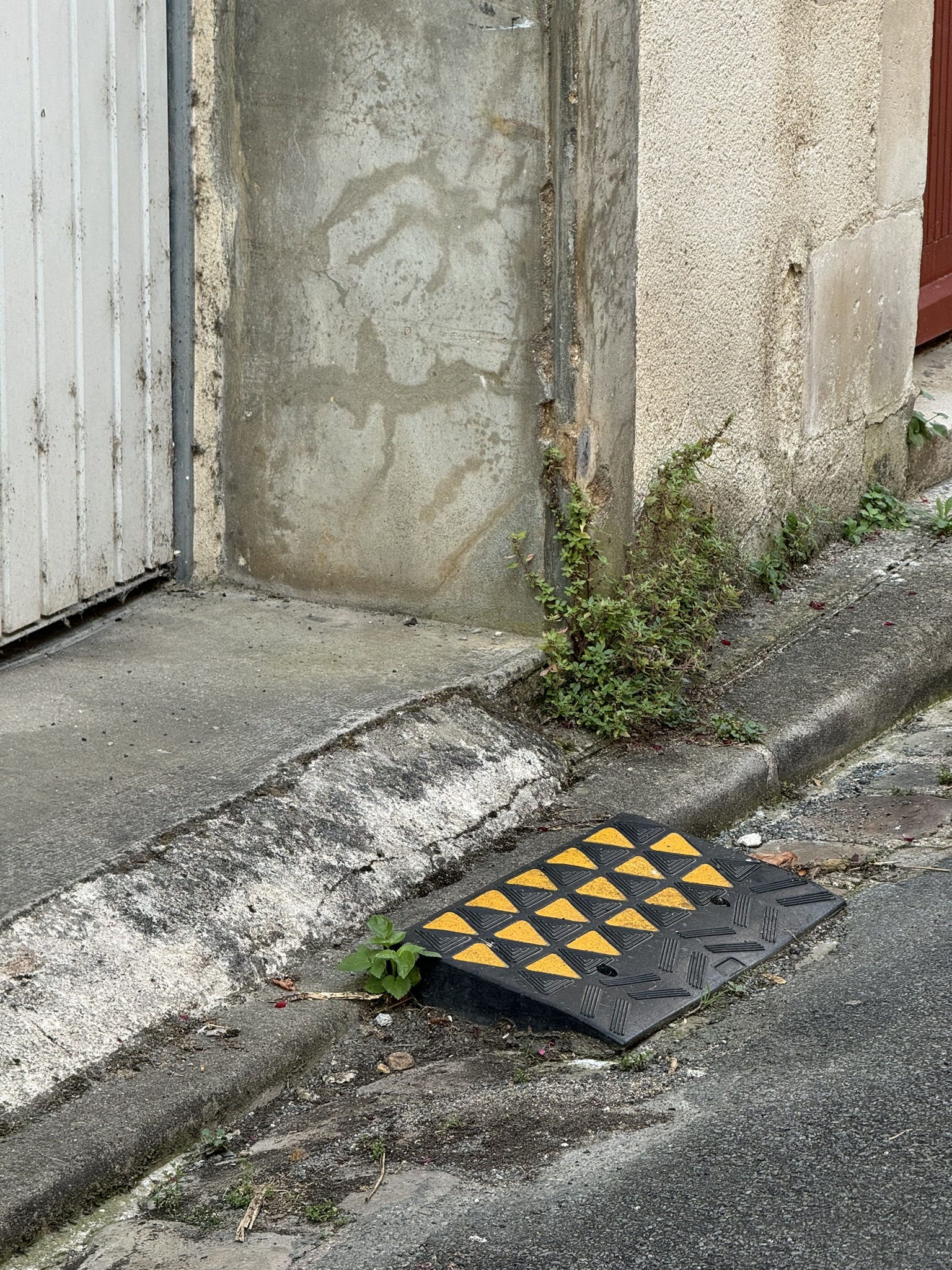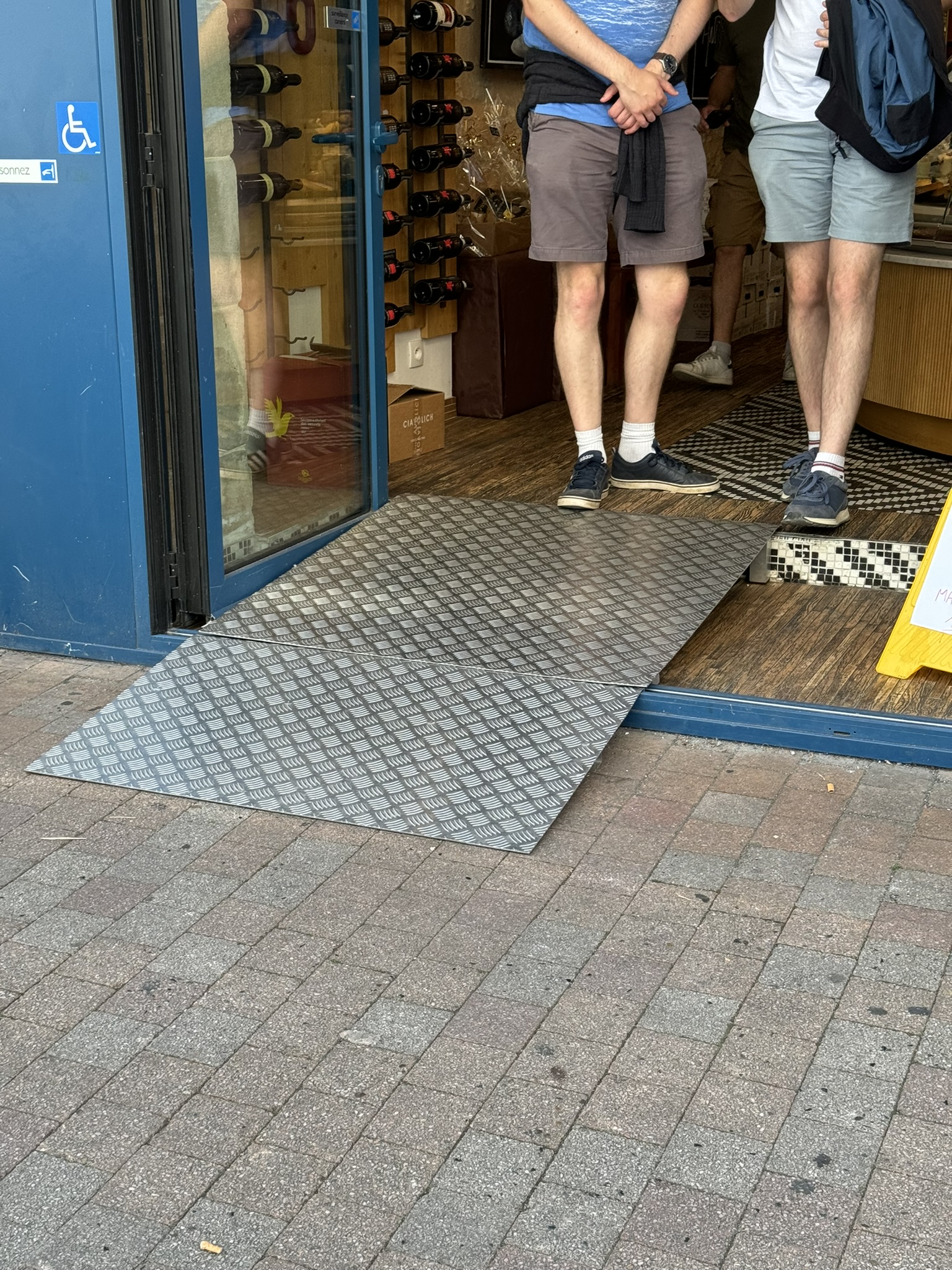Recently, a member of our Easiaccess team embarked on a holiday to France. As true ramp enthusiasts, it was impossible not to notice the various accessibility solutions along the way. From the charming châteaux to bustling city streets, here’s a look at some of the ramps that caught our eye during this French adventure.
A DIY Approach at Château d’Oiron
Our first stop was the beautiful Château d’Oiron, located in the small village of Oiron in Western France. The château, renowned for its modern art displays set against a backdrop of historical grandeur, featured a quaint DIY wooden ramp. It was a simple solution—modest yet effective in providing access to parts of this expansive estate. This small wooden ramp might not have been the most sophisticated structure, but it served its purpose, allowing visitors to explore the art-filled rooms.

Decking Boards for Lion Viewing at Bioparc de Doué-la-Fontaine
Next on the list was a visit to Bioparc de Doué-la-Fontaine, a stunning 14-hectare zoo that opened its doors in 1961. Among the diverse wildlife habitats, we found a timber ramp constructed from decking boards. This ramp led up to a viewing platform, where visitors could observe the majestic lions. While the construction was sturdy, we couldn’t help but wonder if a more durable material might have provided a longer-lasting solution. Nevertheless, it was heartening to see the effort made to ensure everyone could enjoy the wildlife experience.

The Creative (But Flawed) Kerb Solution in Poitiers
In the city of Poitiers, we stumbled upon an inventive yet imperfect ramp solution. A small plastic and rubber ramp had been placed to help people get over a kerb and into a garage. While we commend the effort to improve accessibility, this makeshift ramp was far from ideal. It served as a reminder that while good intentions are important, a well-designed ramp is key to ensuring safety and ease of use.

Levelling Up at Cathédrale Saint-Pierre de Poitiers
Our exploration of ramps took a more sophisticated turn at the Cathédrale Saint-Pierre de Poitiers. Here, we found two noteworthy ramps, each with its own charm. The first was a solid wooden ramp with integrated steps and metal handrails. This structure blended seamlessly with the cathedral’s aesthetic, offering both functionality and style. However, it’s worth noting that wood can become slippery when wet, posing a potential hazard.
The second ramp in the cathedral was even more intriguing. It was overlaid onto an existing stone ramp and featured a wooden centre supported by metal sides. What made this ramp truly unique, though, were the rope handrails—a creative touch that added a rustic feel while providing practical support.

Final Stop: A Wine and Cheese Store in Poitiers
The last ramp we encountered on our trip was in Poitiers again, this time at the entrance of a wine and cheese store. This ramp was constructed from sheet metal, allowing access over a small set of steps. While not the most visually appealing, it was certainly functional, providing a practical solution for customers who needed it.
Conclusion
From DIY wooden ramps to more sophisticated structures, the ramps we encountered on our trip through France showcased a variety of approaches to accessibility. Some were creative, others practical, and a few could benefit from a bit of refinement. This journey through French ramps reminds us of the importance of well-designed access solutions that are not only functional but also safe and aesthetically pleasing.
Stay tuned for more updates from our travels, as we continue to explore and share the world of ramps!

Contact
Request a free survey and quote or discuss what product and service is best for you.
Make Enquiry



